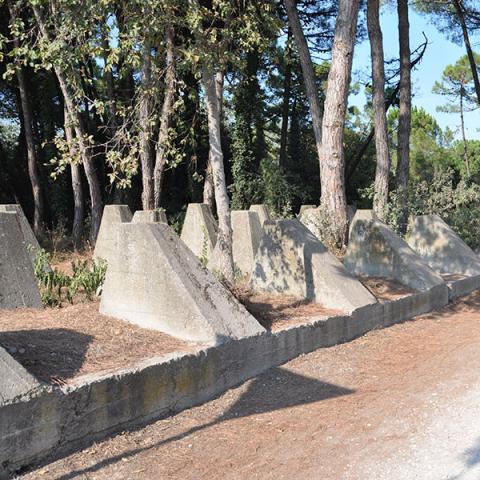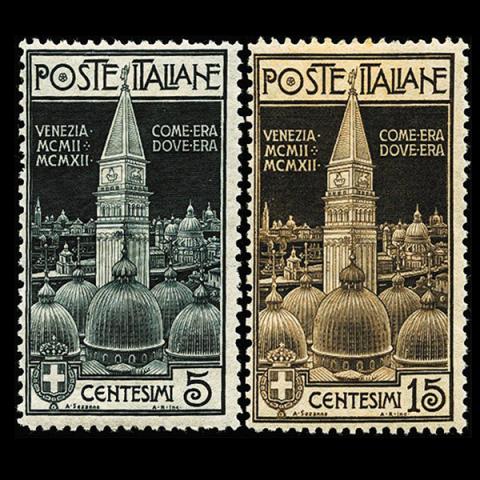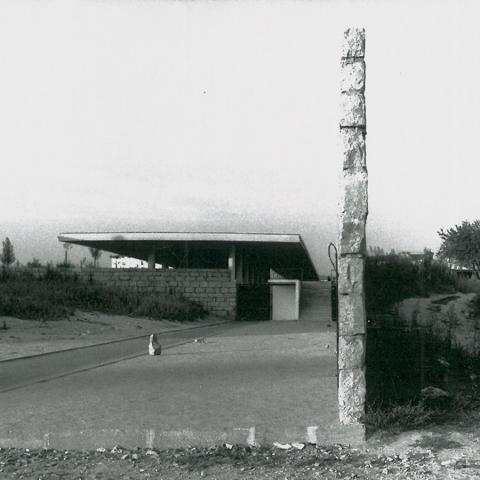alessia.zampini2_1625
PROGETTO LINEA GALLA PLACIDIA
Il contributo presenta il progetto “Linea Galla Placidia” finanziato nel 2020 dalla Regione Emilia-Romagna, ne descrive la genesi, i presupposti, gli attori e i primi risultati, proponendo una riflessione sulle strategie di valorizzazione dei patrimoni cosiddetti “dissonanti”. Il paesaggio militare dei bunker tedeschi eretti a partire dal 1943 a difesa della costa adriatica costituisce un pilota interessante per testare e abilitare soluzioni non convenzionali di riappropriazione, conservazione e fruizione delle eredità controverse del passato.
THE LINEA GALLA PLACIDIA PROJECT
This paper presents the “Linea Galla Placidia” project financed in 2020 by the Emilia-Romagna Region, it describes the genesis, assumptions, actors and first results of this venture, providing a reflection on the enhancement strategies of the so-called “dissonant” heritage. The military landscape of German bunkers erected from 1943 onwards along the Adriatic coast offers an interesting pilot for testing and enabling unconventional solutions of re-appropriation, conservation and access to our controversial inheritance.

Quell’ipocrita (ma rassicurante) ‘dov’era, com’era’
Seppur aspramente criticato e condannato dalla cultura del restauro, il “dov’era, com’era” sembra tornare inesorabilmente ad essere invocato in occasione di ogni traumatica distruzione. Cosa spinge a questa scelta? Quali sono le ragioni sottese alla proposta di replicare l’immagine perduta? In un tentativo di risposta, il pezzo propone una riflessione sul ruolo identitario dei monumenti e sul potere assunto dalla loro immagine nella società contemporanea.
That deceiving (but reassuring) “where it was, as it was”
Even if it the Culture of Restoration has always harshly criticized it, the “where it was, as it was” seems to be evoked after every traumatic destruction. So, what is the driving force behind this choice? What are the reasons for the proposal to replicate a lost image? Trying to find an answer, the piece proposes a reflection on the identity role of monuments and the power assumed by their image in contemporary society.

From know-how to show-how_P2
Nell’investigare nuovi significati del dualismo know-how/show-how, l'articolo riflette sul ruolo e sull'importanza delle tecnologie di comunicazione per l'intervento sulla preesistenza storica. L’analisi di alcuni noti restauri e delle relative vicende mediatiche offre l’occasione per esaminare processi e strumenti informativi chiamati a veicolare i contenuti del progetto, interrogarsi sulla loro efficacia in relazione alle istanze della disciplina, nonché ricercare spazi e modi di divulgazione capaci di trasferire conoscenza e contribuire concretamente alla tutela del patrimonio.
From know-how to show-how_P2
The dualism know-how/show-how comprises different features and reading keys. This second article reflects on the role and importance of the ICT - Information and Communications Technologies for the intervention on historical pre-existence. The analysis of some well-known restoration works and the related media events offers the opportunity to examine processes and information tools for conveying the project contents, to question their effectiveness concerning the issues of the discipline, as well as to investigate ways of dissemination leading concretely to the transferability of knowledge and protection of Cultural Heritage.

From know-how to show-how_P1
Giocando sui termini di know-how e show-how, il contributo approfondisce il ruolo della comunicazione nell'intervento sulla preesistenza. L'analisi di alcuni noti restauri offre l'opportunità di riflettere su autorialità e anonimato del progetto, interrogandosi sulle conseguenze del processo di associazione autore-opera per la disseminazione della cultura del restauro.
From know-how to know-how_P1
By playing on the terms of know-how and show-how, the paper reflects on the importance of communicating the intervention on historical pre-existence. The analysis of some well-known restoration works offers the opportunity to think about the authorship and anonymity of the project, wondering about the consequences of associating author-work for the dissemination of the culture of restoration.
Il coraggio di cambiare se stessi
Cosa accade quando a richiedere un ripensamento sostanziale è una architettura d’autore? Quando un progetto, riconosciuto quale momento fondativo della figuratività di un maestro dell’architettura contemporanea è messo in discussione nei propri caratteri costitutivi? Per il Mercato di Braga è lo stesso Eduardo Souto de Moura a essere chiamato a trovare una risposta, nel difficile compito di rivedere obiettivamente il proprio lavoro.
Daring to change themselves
What happens when an authorial architecture requires a substantial rethinking? What happens when a project, recognized as a founding moment of the figurativeness of a master of contemporary architecture, is questioned in its founding principles? For the Braga Market, it is Eduardo Souto de Moura himself who has to find an answer, in the difficult task of objectively reviewing his work.

